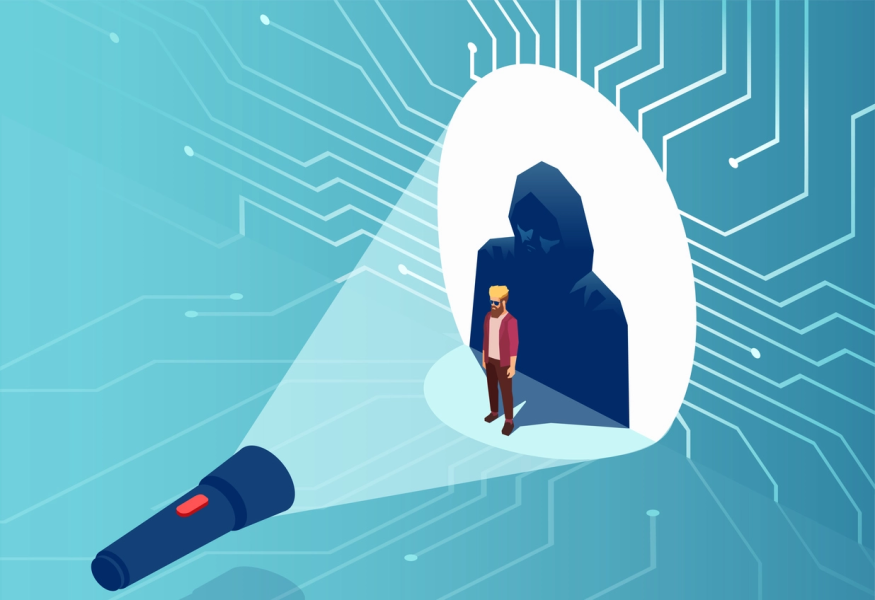
Streaming services have completely transformed the way we consume movies and TV shows, bringing the convenience of accessing content from anywhere, at any time. However, with the rise in popularity of services like Netflix, Hulu, and Disney+, comes the rise in cybersecurity concerns. Hackers and cybercriminals are always on the lookout for ways to exploit users and gain access to their personal information and data.
And this problem is not limited to any particular region or country; it's a global issue, including Canada. Luckily, CrazyStreamers streaming guide for Canada has come up with a comprehensive guide on how to overcome this problem.
In this article, we'll delve deeper into the major cybersecurity issues that streaming services face and the potential risks that users may face while using these services.So without any further delays, let's dive in!
The Rise of Cyberattacks on Streaming Services
Phishing scams
Phishing scams have become a common concern for users of streaming services, and they can have serious consequences. Cybercriminals often create fake websites that resemble popular streaming services like Netflix or Hulu to trick users into entering their login credentials or credit card details. These scams are usually sent via email or social media and may contain a link that redirects users to a fake website that looks like the real deal. Once the user has entered their information, the cybercriminal can then gain access to sensitive data, such as bank account or credit card information, and use it for fraudulent activities.
What makes phishing scams particularly challenging is that they can be challenging to detect, especially for users who are not familiar with the signs of a scam. Cybercriminals often use social engineering techniques to make their phishing emails or messages look legitimate, which can fool even the most tech-savvy users. It's crucial for users to be vigilant and cautious when receiving any messages or emails that ask for personal information, especially if they come from an unfamiliar source.
Risk of Unauthorized Access
Credential stuffing attacks are a significant cybersecurity issue that streaming services face. Cybercriminals use stolen usernames and passwords from one platform to try to access accounts on another platform, such as streaming services. They use automated tools to test millions of username and password combinations to gain unauthorized access to user accounts. Once a cybercriminal gains access, they can use the compromised account for fraudulent activities or even sell it on the dark web.
Credential stuffing attacks can be challenging to prevent as users often use the same password across multiple platforms. It's crucial for users to use unique and complex passwords for every online account they have, including streaming services. Two-factor authentication is also an effective way to prevent unauthorized access to user accounts. By enabling two-factor authentication, users will be required to enter a unique code sent to their phone or email, making it much harder for cybercriminals to gain access to their accounts.
Menace of Brute Force Attacks
Brute force attacks are another significant cybersecurity threat faced by streaming services. In a brute force attack, cybercriminals use automated tools to guess usernames and passwords until they find the correct combination to gain unauthorized access to user accounts. This type of attack is particularly effective if users have weak passwords or if the platform doesn't have adequate security measures in place.
To prevent brute force attacks, streaming services can implement measures such as rate-limiting login attempts and requiring complex passwords. Users can also protect themselves by using unique and complex passwords for each online account they have and enabling two-factor authentication. It's important for both streaming services and users to take necessary measures to prevent brute force attacks, as they can lead to the theft of personal information and data breaches.
Malware Attacks
Streaming service apps can sometimes be infected with malicious software that can compromise users' devices and steal personal information. This type of attack often occurs when users download apps from untrusted third-party sources or when they click on suspicious links. Once the malicious software is installed, it can harm the device and the data stored on it.
To avoid this type of attack, users should only download apps from trusted sources, such as official app stores, and avoid clicking on suspicious links or pop-ups. Additionally, using reputable antivirus software can help detect and remove any malicious software that may already be present on the device. It's important to stay vigilant and take precautions to protect personal information and devices from potential threats.
Ending Note
In conclusion, the convenience of streaming services comes at a cost, and users must be aware of the cybersecurity risks that come with them. From phishing scams and credential stuffing attacks to malware-infected apps, cybercriminals are always looking for ways to exploit unsuspecting users.
By staying vigilant and informed about cybersecurity best practices, users can continue to enjoy the benefits of streaming services without compromising their security.
© 2025 ScienceTimes.com All rights reserved. Do not reproduce without permission. The window to the world of Science Times.












